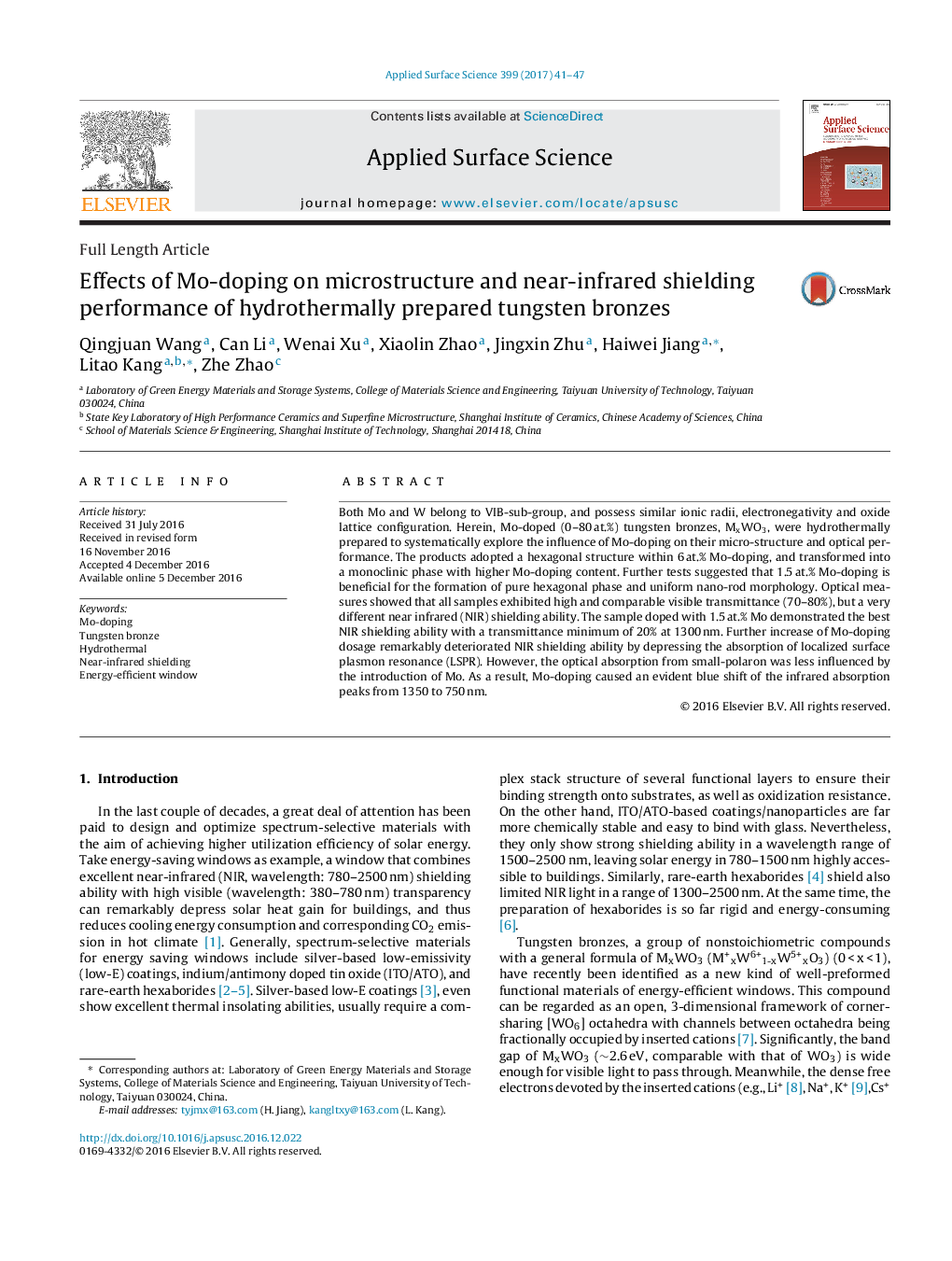| Article ID | Journal | Published Year | Pages | File Type |
|---|---|---|---|---|
| 5351029 | Applied Surface Science | 2017 | 7 Pages |
Abstract
Both Mo and W belong to VIB-sub-group, and possess similar ionic radii, electronegativity and oxide lattice configuration. Herein, Mo-doped (0-80Â at.%) tungsten bronzes, MxWO3, were hydrothermally prepared to systematically explore the influence of Mo-doping on their micro-structure and optical performance. The products adopted a hexagonal structure within 6Â at.% Mo-doping, and transformed into a monoclinic phase with higher Mo-doping content. Further tests suggested that 1.5Â at.% Mo-doping is beneficial for the formation of pure hexagonal phase and uniform nano-rod morphology. Optical measures showed that all samples exhibited high and comparable visible transmittance (70-80%), but a very different near infrared (NIR) shielding ability. The sample doped with 1.5Â at.% Mo demonstrated the best NIR shielding ability with a transmittance minimum of 20% at 1300Â nm. Further increase of Mo-doping dosage remarkably deteriorated NIR shielding ability by depressing the absorption of localized surface plasmon resonance (LSPR). However, the optical absorption from small-polaron was less influenced by the introduction of Mo. As a result, Mo-doping caused an evident blue shift of the infrared absorption peaks from 1350 to 750Â nm.
Related Topics
Physical Sciences and Engineering
Chemistry
Physical and Theoretical Chemistry
Authors
Qingjuan Wang, Can Li, Wenai Xu, Xiaolin Zhao, Jingxin Zhu, Haiwei Jiang, Litao Kang, Zhe Zhao,
